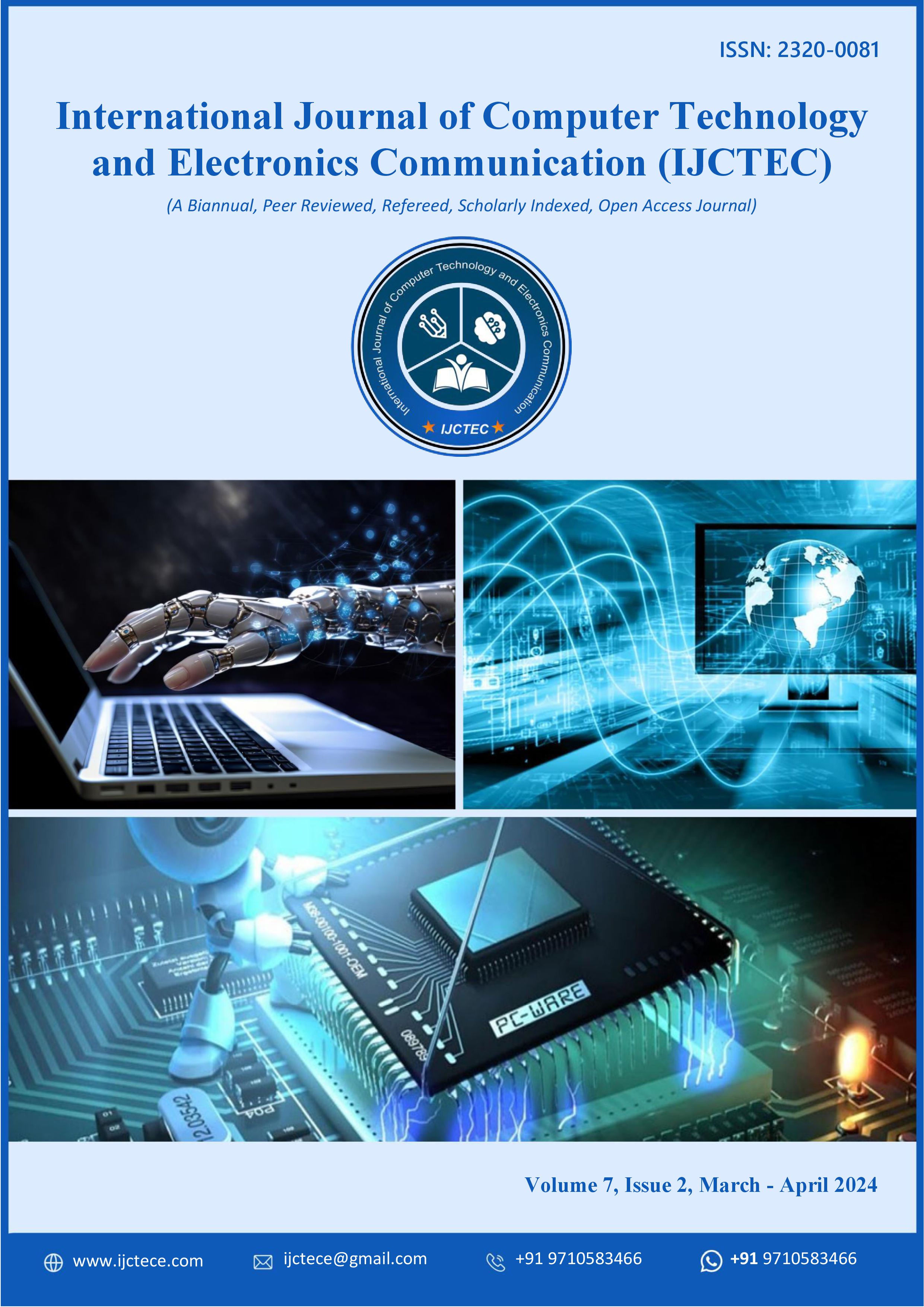Cloud-Integrated Generative Pipelines for Digital Twin Vehicle Models
DOI:
https://doi.org/10.15680/IJCTECE.2024.0702003Keywords:
Digital twin, Generative AI, Cloud computing, Vehicle modeling, Vehicle dynamics simulation, Predictive maintenance, Variational Autoencoders (VAEs), Generative Adversarial Networks (GANs), Connected vehicles, Real-time simulationAbstract
Digital twin technology enables the creation of real-time, virtual replicas of physical assets, systems, or processes, offering significant benefits for monitoring, analysis, and predictive maintenance. In the automotive domain, digital twin vehicle models facilitate enhanced design, testing, and lifecycle management. However, constructing accurate, adaptive, and scalable digital twins poses challenges due to the complexity and variability of vehicle behaviors and environments.
This paper introduces a cloud-integrated generative pipeline for developing high-fidelity digital twin vehicle models. By leveraging cloud computing resources and advanced generative AI techniques—such as Variational Autoencoders (VAEs), Generative Adversarial Networks (GANs), and neural simulators—the proposed pipeline synthesizes realistic vehicle dynamics, sensor outputs, and operational scenarios. The cloud integration ensures scalability, data accessibility, and seamless collaboration across distributed teams.
The pipeline incorporates continuous data streams from connected vehicles, including telemetry, sensor feeds, and environmental data, enabling dynamic updating of digital twins for near real-time fidelity. Generative models learn latent representations of vehicle states and behaviors, allowing scenario synthesis and anomaly detection for predictive maintenance and safety analysis.
Experimental validation using datasets from connected vehicle fleets demonstrates the pipeline's ability to accurately replicate vehicle states and predict system anomalies with higher precision than traditional model-based approaches. The cloud architecture supports scalable simulations and analytics, facilitating widespread deployment in smart transportation systems.
The study highlights the advantages of integrating generative AI and cloud computing for digital twin development, discusses implementation challenges such as data privacy and latency, and outlines future directions to enhance model adaptability and real-time responsiveness.
References
1. Tao, F., Zhang, M., Liu, Y., & Nee, A. Y. C. (2018). Digital Twin Driven Smart Manufacturing. Journal of Manufacturing Systems, 48, 157-169.
2. Devaraju, S., & Boyd, T. (2021). AI-augmented workforce scheduling in cloud-enabled environments. World Journal of Advanced Research and Reviews, 12(3), 674-680.
3. Kumbum, P. K., Adari, V. K., Chunduru, V. K., Gonepally, S., & Amuda, K. K. (2023). Navigating digital privacy and security effects on student financial behavior, academic performance, and well-being. Data Analytics and Artificial Intelligence, 3(2), 235–246.
4. Lei, Y., Li, N., Guo, L., Li, N., Yan, T., & Lin, J. (2018). Machinery Health Prognostics: A Systematic Review from Data Acquisition to RUL Prediction. Mechanical Systems and Signal Processing, 104, 799-834.
5. Kingma, D. P., & Welling, M. (2013). Auto-Encoding Variational Bayes. International Conference on Learning Representations (ICLR).
6. Lekkala, C. (2019). Optimizing Data Ingestion Frameworks in Distributed Systems. European Journal of Advances in Engineering and Technology, 6(1), 118-122.
7. Goodfellow, I., Pouget-Abadie, J., Mirza, M., Xu, B., Warde-Farley, D., Ozair, S., Courville, A., & Bengio, Y. (2014). Generative Adversarial Nets. Advances in Neural Information Processing Systems (NeurIPS), 27, 2672-2680.
8. Larsen, A. B. L., Sønderby, S. K., Larochelle, H., & Winther, O. (2016). Autoencoding Beyond Pixels Using a Learned Similarity Metric. International Conference on Machine Learning (ICML).
9. S. Devaraju, HR Information Systems Integration Patterns, Independently Published, ISBN: 979-8330637850, DOI: 10.5281/ZENODO.14295926, 2021.
10. Poovaiah, S. A. D. EVALUATION OF LOGIC LOCKING SCHEMES AGAINST ORACLE-LESS MACHINE LEARNING ATTACKS AT THE RTL LEVEL. Journal ID, 9339, 1263.
11. Qi, Q., Tao, F., Zuo, Y., Zhao, D., & Nee, A. Y. C. (2020). Digital Twin Service towards Smart Manufacturing. Journal of Manufacturing Systems, 56, 1-14.
12. Nguyen, T. T., Chen, Z., & Han, S. (2021). GAN-Based Synthetic Sensor Data Generation for Autonomous Vehicle Training. IEEE Transactions on Intelligent Vehicles, 6(3), 477-487.
13. Gonepally, S., Amuda, K. K., Kumbum, P. K., Adari, V. K., & Chunduru, V. K. (2023). Addressing supply chain administration challenges in the construction industry: A TOPSIS-based evaluation approach. Data Analytics and Artificial Intelligence, 3(1), 152–164.
14. Pareek, C. S. Test Data Management Trends: Charting the Future of Software Quality Assurance.
15. Devaraju, S., Katta, S., Donuru, A., & Devulapalli, H. Comparative Analysis of Enterprise HR Information System (HRIS) Platforms: Integration Architecture, Data Governance, and Digital Transformation Effectiveness in Workday, SAP SuccessFactors, Oracle HCM Cloud, and ADP Workforce Now.
16. Liu, Y., Zhang, H., & Chen, Y. (2022). Cloud-Integrated Variational Autoencoder for Anomaly Detection in Connected Vehicle Fleets. IEEE Internet of Things Journal, 9(12), 9985-9995.


